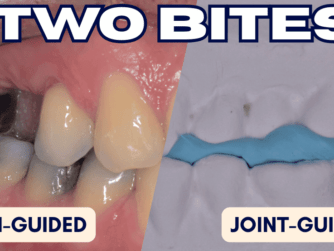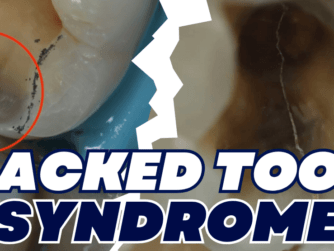Podcast: Play in new window | Download (Duration: 44:11 — 61.6MB)
Subscribe: RSS
When Your Size 10 File is not going to length, what is happening?
Your apex locator isn’t giving you a zero reading. Your file is stuck. You’re wondering—have you ledged? Or could something else be at play?
In this must-listen follow-up episode, Dr. Samuel Johnson returns to tackle the biggest endodontic dilemmas left unanswered from part one. If you haven’t checked that out yet, go back and listen—it’s packed with insights on working lengths, apex locators, and even the role of consent in endodontics.
Now, in part two, we go deeper. We’re talking blockages, ledges, portals of exit, and the mysterious phenomenon of file gripping. Plus, Dr. Johnson takes on your burning questions from the Protrusive community—like how he responds to biological dentists claiming root canals should be avoided entirely. (Yep, we’re addressing that controversy head-on!)
Protrusive Dental Pearl: For a more visual learning experience, dive into the Pre-Endo Build-Up on Protrusive Guidance and see Jaz and Samuel’s insights in action.
Sonic Pro Ultrasonic Bath – 10% OFF with coupon code ‘protrusive10’
Improve your Bond Strengths – purchase while stocks last: Sonic Pro Discount
Key Takeaway:
- General dentists often overlook the importance of taper.
- Removing too much dentin can weaken the tooth.
- GP cones can be unstable and affect the procedure.
- Reshaping GP cones can often resolve length issues.
- Pre-bending GP cones can help navigate tight curves.
- Biological dentists have controversial views on root canals.
- It’s essential to prioritize the patient’s best interest.
- Using endo frost can aid in manipulating GP cones.
- Consent should be informed and comprehensive.
- Communication between referring dentists and specialists is vital.
- Continuous learning is essential for dental professionals.
- Ultrasonic activation improves endodontic outcomes.
- Pulpotomy and root canal treatments have distinct indications.
- Building a supportive community can alleviate feelings of isolation in dentistry.
- Dentists should charge for their time and expertise.
Need to Read it? Check out the Full Episode Transcript below!
Highlight of this Episode:
- 01:03 Protrusive Dental Pearl
- 01:49 Common Scenarios and Tips for Young Dentists
- 05:30 File Gripping and Canal Anatomy
- 08:30 Master Apical File: The Common Dilemma
- 11:18 GP Cone Issues and Solutions
- 17:03 Addressing Root Canal Myths
- 23:35 Cracks in Teeth: Prognosis and Treatment
- 25:44 Ninja Access Cavities: Pros and Cons
- 28:21 Common Mistakes in Emergency Endodontic Treatments
- 33:51 Obturation: Overextended vs Short
- 34:41 UltraSonic vs Sonic Irrigants
- 36:15 Pulpotomy and General Dentistry
- 39:25 Building a Dental Community
As promised, here are the ESE Guidelines on managing cracked teeth.
Watch and learn from Dr. Samuel Johnson on Instagram and YouTube!
Don’t miss the first part of this series: PDP216 – Working Lengths and Troubleshooting Apex Locators
#PDPMainEpisodes #EndoRestorative #BreadandButterDentistry
This episode is eligible for 0.75 CE credit via the quiz on Protrusive Guidance.
This episode meets GDC Outcomes B and C.
AGD Subject Code: 070 ENDODONTICS (Emerging concepts, techniques, therapies and technology)
This episode aimed to provide deeper insights into troubleshooting endodontic challenges, particularly when files fail to reach working length. It explores common pitfalls, advanced techniques, and expert strategies to improve clinical outcomes in root canal treatments.
Dentists will be able to –
1. Recognize common endodontic challenges and strategies to navigate them effectively.
2. Evaluate the role of master apical files and resolve common dilemmas in achieving optimal shaping.
3. Identify frequent errors in urgent cases and improve treatment approaches.







